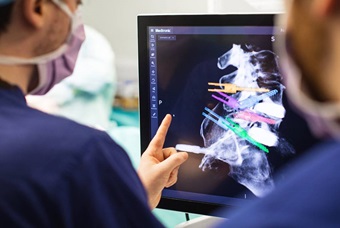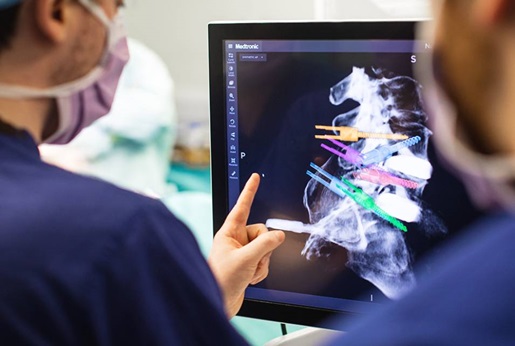The rise of MDTs in private patient practice
Mr Tom Ember is a Consultant Orthopaedic and Spinal Surgeon specialising in the treatment of adult and paediatric spinal conditions. He established and chairs HCA UK’s London Bridge Hospital Spinal Multidisciplinary Meeting and works within a multidisciplinary team environment throughout his practice.
HCA Healthcare UK has been pioneering within the independent sector in establishing specialist MDTs. The Spinal MDT includes spinal clinical nurse specialists and physiotherapists, as well as specialists in orthopaedic spinal surgery, neurosurgery, radiology, pain management, orthotics and, when required, oncology, rheumatology and neurology.
Members of the team submit the cases they wish to discuss during the week prior to the meeting via an online input referral pro forma. For an MDT to be effective and accurate, the patient’s case history must be detailed and imaging up to date. The case is presented at the meeting by the referring consultant and the Chair will ensure that a comprehensive history has been provided prior to discussion regarding treatment options amongst the group.




How an MDT shares their opinion with the patient
The discussions and consensus view are summarised by the Chair and this forms the basis for the output document. In order to provide the patient with an idea of the degree of consensus among the MDT, a traffic light system is used to summarise the meeting:
Green represents a normal variance of opinion in which fundamentally everyone is in agreement that the proposed treatment is reasonable and has a high chance of success with a low risk of complication.
Amber represents some variance of opinion with some members of the team disagreeing with the proposed treatment plan. It is important that the referring consultant discusses the alternative treatment options, benefits and relative risks of the different treatments with their patient.
Red represents a general view among the whole group that the proposed treatment is not reasonable and would represent outlying activity as the risks are too high and the chances of a good result are low. These cases occur very rarely.
Key factors for MDT success
For MDTs to be successful, "participation is key," stresses Mr Ember. "It is important that members of the team attend the meeting, even if they do not have cases of their own to present as their opinions on colleagues’ cases are important.
The second factor is that members of the team attend with an open mind and a desire to hear alternative opinions and points of view. Attending high quality MDTs makes us all better doctors."
Patients are always very positive when they learn about the MDT process. "If I am planning to operate on a patient I explain to them that their case history and imaging will be discussed among a group of specialists and I will therefore be able to provide them with multiple "second opinions" and a consensus view with regards to the best treatment for their problem. Patients invariably find this reassuring and are always keen to see the results of the meeting."
In the past consultants have often expressed the view that the contract of care is between the consultant and the patient. It is important to stress that this remains the case but working within an MDT environment is no longer the standard of care found solely within the NHS, this is also the case at HCA UK.
"An MDT should be an enjoyable and fulfilling meeting for colleagues who share the same interests and passions. When done well, the MDT benefits the patient, the consultant and the hospital," closes Tom. At HCA UK our healthcare professionals come together to determine a patient’s treatment plan and improve the quality of care. They are integral in consistently ensuring patient safety and driving best-in-class care.